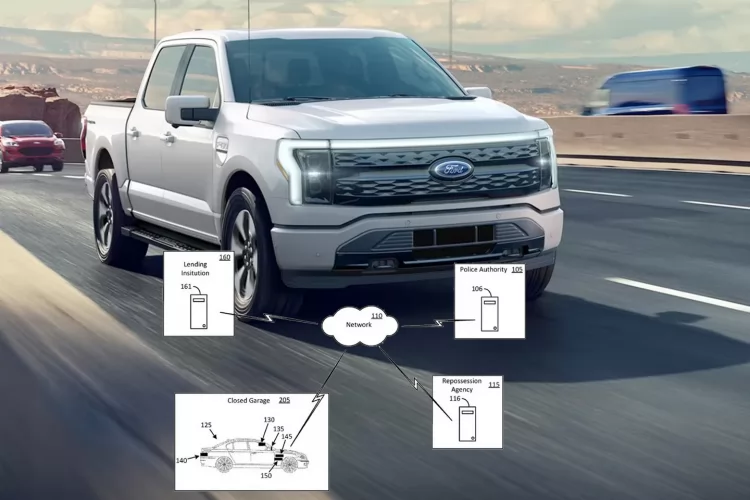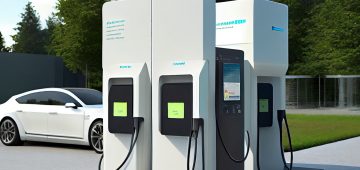Most people are aware that the auto industry is undergoing a significant transformation with the rise of electric vehicles (EVs). This transition not only impacts manufacturing processes and investment strategies but also profoundly affects your future job prospects and skills requirements. As traditional combustion engines give way to greener alternatives, understanding what this shift means for you—and how to adapt your career—will be vital. In this blog post, we will explore the implications of this shift for the workforce and what you can do to prepare for the road ahead.
Key Takeaways:
- Job Evolution: The transition to electric vehicles (EVs) will result in significant changes to job roles within the auto industry, requiring new skills and training for workers.
- Workforce Reskilling: Automotive companies are investing in reskilling programs to prepare current employees for the technological advancements associated with EV manufacturing and maintenance.
- Impact on Employment: The shift to EVs may lead to job displacement in traditional automotive sectors, though it could also create new opportunities in EV-related fields.
The Shift to Electric Vehicles
Overview of EV Technology
Overview of Electric Vehicle (EV) technology reveals a radical transformation in automotive engineering. Your understanding of automobiles is about to evolve, as EVs utilize electric powertrains, incorporating components such as electric motors, batteries, and charging systems. Unlike traditional internal combustion engines, which rely on gasoline or diesel, EVs operate on electricity stored in batteries. This shift not only affects vehicle design but also presents new challenges for manufacturers and workers, as the technical skills needed for EV production differ significantly from those required for conventional vehicles.
The architecture of EVs has paved the way for integrating advanced technologies, including regenerative braking and smart grid connections. These innovations not only improve the efficiency and performance of vehicles but also reduce the carbon footprint associated with transportation. As you explore deeper into this new world, consider how your own knowledge and skills may need to adapt to keep pace with the rapidly evolving landscape of EV technology.
Market Trends in Electric Vehicle Adoption
Beside advancements in technology, you should also be aware of the market trends driving the adoption of electric vehicles. Consumer interest in EVs is surging, fueled by increasing environmental awareness and the advent of more affordable models from numerous manufacturers. The global push for sustainable energy solutions is making electric cars more accessible, with sales figures showing a significant uptick year over year. All indicators suggest that a turning point has arrived, highlighting the positive direction in which the automotive industry is heading.
Shift in consumer preferences is playing a pivotal role in shaping the automotive market. As you observe the trend toward electric mobility, keep in mind that new entrants in the market—such as startups focusing on innovative electric models—are challenging established automakers. Your need to stay informed about these changes will be vital, as both opportunities and obstacles arise within this dynamic environment.
Government Policies and Incentives
Between increasing public demand and technological advancements, government policies and incentives are driving the transition to electric vehicles. Governments worldwide are implementing various initiatives, such as tax credits, rebates, and subsidies, aimed at both manufacturers and consumers to encourage EV adoption. These policies often reflect a commitment to reducing emissions and achieving climate goals. As a member of the automotive workforce, understanding these regulations is important, as they can significantly affect the industry’s trajectory.
And with many countries setting ambitious targets for phasing out internal combustion vehicles, it becomes evident that your industry is at a critical juncture. These policies are not merely formalities; they create tangible benefits for consumers in the form of lower purchase prices and operating costs. As you navigate the changing landscape, grasping how these government initiatives interact with market demands will be important for adapting to future trends in the auto industry.
Impact on Automotive Workforce
Clearly, the transition to electric vehicles (EVs) will have a significant impact on the automotive workforce. As the industry pivots towards more sustainable options, you may have concerns about how this shift could affect employment in traditional sectors. With new technologies emerging, the landscape will change, necessitating adjustments in skill sets and job roles. In fact, as outlined in the article about the long road ahead to green the vehicle industry, many workers today might find their skills no longer relevant, sparking both anxiety and urgency to adapt.
Job Displacement Concerns
By transitioning from gasoline-powered vehicles to electric ones, the auto industry is facing potential job displacement for many workers. Traditional assembly line roles may diminish as the production process for EVs often requires fewer moving parts and a different set of manufacturing skills. You might find that workers in areas that specialize in internal combustion engine components are especially vulnerable to job loss, leading to concerns about how to effectively transition these individuals to new roles within the evolving industry landscape.
Furthermore, the potential for economic disruption in communities heavily reliant on traditional automobile manufacturing cannot be overlooked. As your region adapts to these changes, you may observe economic shifts that require community leaders and policymakers to develop strategies to support those affected, ensuring that workers are not left behind in the transition.
Skills Gap and Training Needs
Needs for new skills to support the EV transition are vital. Many automotive workers currently lack the necessary training for positions in EV manufacturing and maintenance. This gap in skills can create barriers for those seeking to transition into new roles. You will need to recognize that training programs will play a pivotal role in equipping your workforce with the knowledge and competencies required for this new era of automotive technology.
Also, addressing this skills gap will require collaboration between industry leaders, educational institutions, and training providers. By fostering partnerships that emphasize hands-on experience and technical education, you can ensure that your workforce evolves in tandem with the industry’s changing demands. This commitment to training will not only benefit individual workers but also enhance the overall productivity and adaptability of the automotive sector.
Opportunities for Growth in New Sectors
One of the most exciting aspects of the transition to EVs is the potential for new opportunities in emerging sectors. As the industry evolves, you may find increased demand for roles related to battery technology, charging infrastructure, and renewable energy integration. These areas present rich avenues for growth and innovation, enabling workers to pivot to roles that are not only sustainable but will also be in high demand in the future marketplace.
At the same time, you’ll want to explore how innovation in automated and connected vehicle technologies can create new job roles that focus on software development, data analysis, and cybersecurity. This shift presents a chance for you to engage in sectors that are growing rapidly and are critical for the future of mobility. That’s why being proactive in seeking out training and education in these fields can yield substantial rewards as the automotive workplace continues to transform.
Preparing for the Future
All automotive industry professionals must recognize that the transition to electric vehicles (EVs) represents a significant shift in the landscape of the workforce. As the industry evolves, you will need to embrace new skills and develop strategies that align with the changing demands. It is necessary to be proactive in understanding the necessary steps toward this transformation.
Strategies for Workforce Transition
Behind the scenes, organizations are devising various strategies to facilitate the workforce transition from traditional vehicle manufacturing to EV production. This shift requires a comprehensive approach that encompasses workforce reskilling, upskilling, and strategic planning. You will find that engaging in training programs and workshops can significantly enhance your understanding of EV technology and operational processes.
Furthermore, you should explore partnerships with industry leaders and local stakeholders who can provide insight and resources needed for workforce development. Collaboration will play a vital role in optimizing your organization’s transition strategy, enabling you to adapt quicker and more effectively to the new industry standards.
Role of Education and Training Institutions
Education is paramount in preparing you for the upcoming changes in the auto industry. Educational institutions and vocational training centers are stepping up to provide specialized courses tailored to EV technologies and sustainable practices. By seeking out these programs, you can equip yourself with the knowledge and skills that will be in demand as the market evolves.
With ongoing efforts to modernize curricula and integrate hands-on training, you can expect a surge in opportunities to learn about battery technology, electric drivetrains, and software systems that are now fundamental to vehicle innovation. This focus on practical application ensures that graduates will be well-prepared to meet the needs of employers thriving in the EV sector.
Corporate Responsibility and Initiatives
Transition to electric vehicles not only impacts the workforce but also emphasizes the importance of corporate responsibility. As companies pivot towards sustainable practices, you should look for organizations that prioritize ethical transitions for their employees. Initiatives such as retraining programs, job placement services, and comprehensive workforce assessments are becoming necessary components of a responsible corporate strategy.
Consequently, organizations that take the lead in supporting their employees through this transition will foster loyalty and a positive working environment. By participating in such initiatives, you enhance your chances of career stability and growth within the evolving landscape of the auto industry.
To wrap up
As a reminder, the transition to electric vehicles (EVs) presents both challenges and opportunities for the auto industry’s workforce. You are likely to see significant shifts in job roles, skill requirements, and production processes as manufacturers adapt to new technologies and market demands. Understanding these changes will enable you to navigate the evolving landscape more effectively, ensuring that your skill set remains relevant and valuable in an industry that is moving toward sustainability and innovation.
In embracing this transition, you have the opportunity to contribute to a greener future while also securing your position in the workforce. It is important that you stay informed about emerging technologies and seek out training and educational opportunities that align with the industry’s direction. The road ahead may be long, but your proactive engagement in adapting to the changes will position you as a valuable asset in the new era of the auto industry.
FAQ
Q: What specific changes in the auto industry workforce will occur with the transition to electric vehicles (EVs)?
A: The transition to electric vehicles is expected to significantly alter the skills required within the auto industry workforce. Traditional automotive manufacturing focuses heavily on internal combustion engines, demanding skills related to mechanical engineering and assembly. In contrast, EV manufacturing places greater emphasis on software development, battery technology, and electronics. Workers will need to adapt to new roles in designing, engineering, and assembling electric drivetrains and managing intricate battery systems. This shift may require retraining programs and educational initiatives to equip the current workforce with the necessary skills to thrive in the evolving automotive landscape.
Q: How will this transition impact job opportunities in the auto industry?
A: The shift towards electric vehicles presents both challenges and opportunities for job creation within the auto industry. While certain roles associated with traditional vehicle manufacturing may decline, new jobs are expected to emerge, particularly in sectors linked to EV production, charging infrastructure development, and renewable energy integration. Positions in research and development, battery production, and software engineering are anticipated to grow. Additionally, as EV adoption increases, there will be demand for technicians skilled in maintenance and repair of electric vehicles. Overall, while some roles may diminish, the transition could lead to a net increase in diverse job opportunities within the industry.
Q: What strategies can auto manufacturers employ to support their workforce during this transition?
A: Auto manufacturers can adopt several strategies to effectively support their workforce during the transition to electric vehicles. First, initiating comprehensive retraining and upskilling programs can help current employees adapt to new technologies and roles. Collaborations with educational institutions and industry organizations can facilitate the development of curriculum focused on EV technology and maintenance. Second, offering incentives such as financial assistance for further education or skill development can motivate workers to embrace the transition. Lastly, fostering an inclusive culture that values continuous learning will encourage employees to engage with the changing landscape of the auto industry and align their career paths with emerging opportunities.



